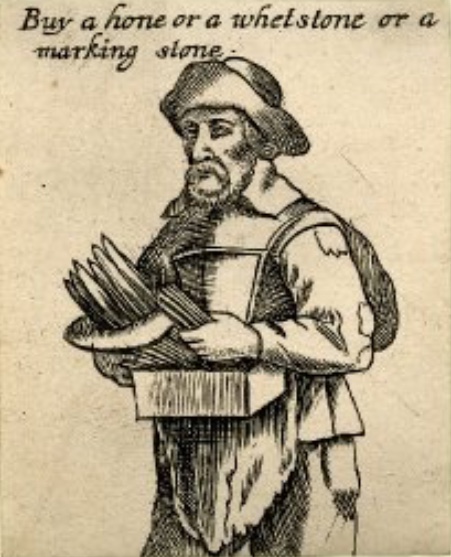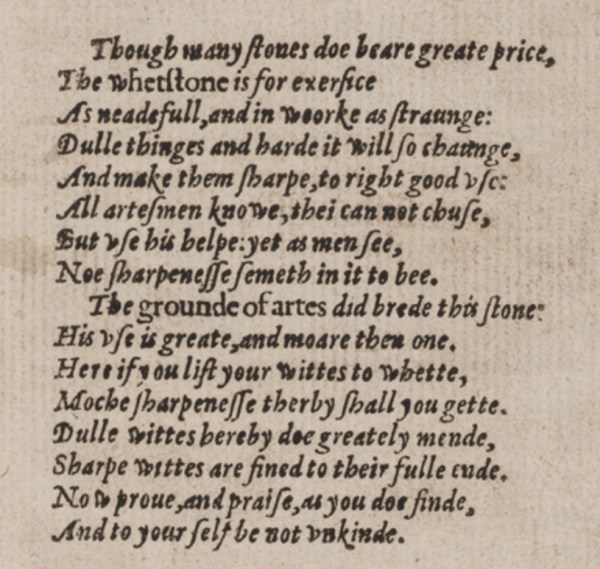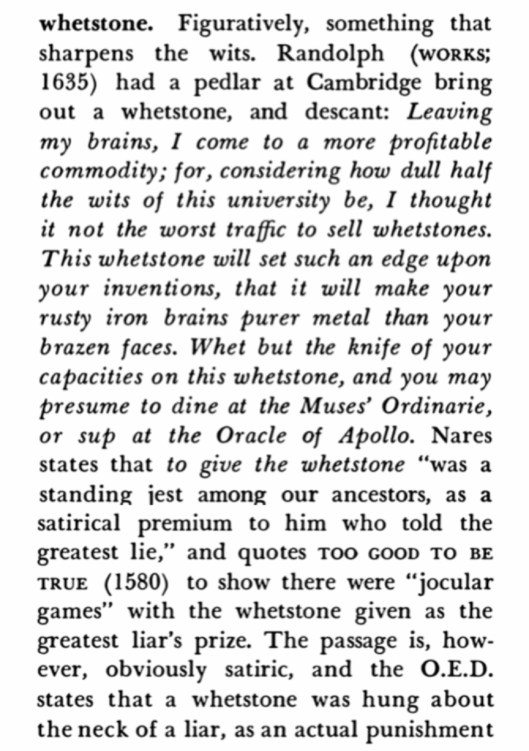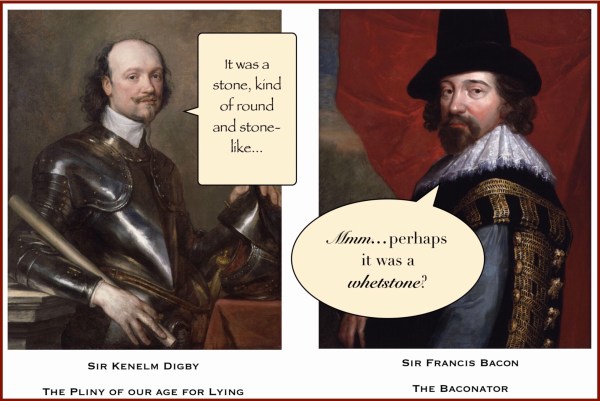
If you are a diligent woodworker you have a sharpening station, all your edge tools are clean and sharp and your sharpening stones nice and flat. How about your mind? Sharp, or nice and flat? What about your truthiness? It turns out the lowly whetstone has a few lessons to sharpen your mind and test your honesty.
‘The Whetstone of Witte’
Robert Recorde, Welsh mathematician and physician, published a wonderful book on algebra (stay with me), “The Whetstone of Witte,” in 1557. He opened his book, which has the first known use of the equal (=) sign, with a poem.

He explains the whetstone in relation to tools: “Dulle thinges and harde it will so chaunge/And make them sharpe, to right good use.” Recorde continues and advises the student what can be gained by studying his book. “Here if you lift your wittes to whette/Muche sharpness thereby shall you gette.” Delightful and in a math book!
Now, a riddle for woodworkers from a late 18th-century children’s chapbook titled, “A New Riddle Book, Or, A Whetstone for Dull Wits.”

Couzen or cozen = to deceive.
The ‘Other’ Definition
On we go to the punitive and satirical side of whetstones. This is from the 1955 edition of “Dictionary of Early English” edited by Joseph T. Shipley.

The definition continues with a record of punishment for deceit and other examples of usage. The primary sources for these were relatively easy to find and so down the rabbit hole we go.
Punishment of the Pillory and Whetstone
In the Letter Books of the City of London from 1412 there is an account of the deceit of William Blakeney, a shuttlemaker. “Under the guise of sanctity” and also barefoot and with long hair he pretended to be a hermit and “under colour of such falsehood he had received many good things from divers persons.” As a skilled craftsman he was capable of supporting himself but for six years he “lived by such lies, falsities, and deceits, so invented by him, to the defrauding of the people.”

“It was adjudged that said William should be put upon the pillory for three market-days, there to remain for one hour each day, the reason for the same being there proclaimed; and he was to have, in the meantime, whetstone hung from his neck.”
Son of a…
In “The Busie Body: A Comedy” a play written in 1709 by Mrs. Susanna Centlivre, we have another use of whetstone. Sir Francis Gripe is guardian to Miranda and Marplot. (Gripe is also in love with Miranda.) Marplot is described as a silly fellow and very “Inquisitive to know every Body’s Business, generally spoils all he undertakes, yet without Design.” In one response to Sir Francis he declares :

Philosopher’s Stone vs. Whetstone
This next reference is a canto from “Hudibras” a satiric poem written by Samuel Butler that was published in several parts beginning in 1663.

“The rate of whetstones in the kingdom” is explained in an 1819 annotated copy of the poem as a proverbial expression, in which, “an excitement to lie was called a whetstone.” The annotation also gives direction to a 1572 Puritan Manifesto directed towards Queen Elizabeth in which the term “lying to a whetstone” is found.
The best whetstone reference, also from the annotations, is from a “smart repartee” between Sir Francis Bacon and Sir Kenelm Digby. In one corner we have Sir Francis Bacon, Lord Chancellor of England, philosopher and father of scientific method (yay!). In the other corner Sir Kenelm Digby, a natural philosopher, alchemist, proponent of “powder of sympathy” and described by the scholar Henry Stubbe as “the very Pliny of our age for lying.”
The two men were before King James, “to whom Sir Kenelm Digby was relating, that he had seen the true philosopher’s stone in the possession of a hermit in Italy; and when the king was very curious to understand what sort of stone it was, and Sir Kenelm much puzzled in describing it; Sir Francis Bacon interposed, and said, perhaps it was a whetstone.”

If your mind is sharp, your heart true, and you only want to sharpen some tools, the blog has a plethora of posts on sharpening. You can find the one to which I am most partial here.
— Suzanne Ellison